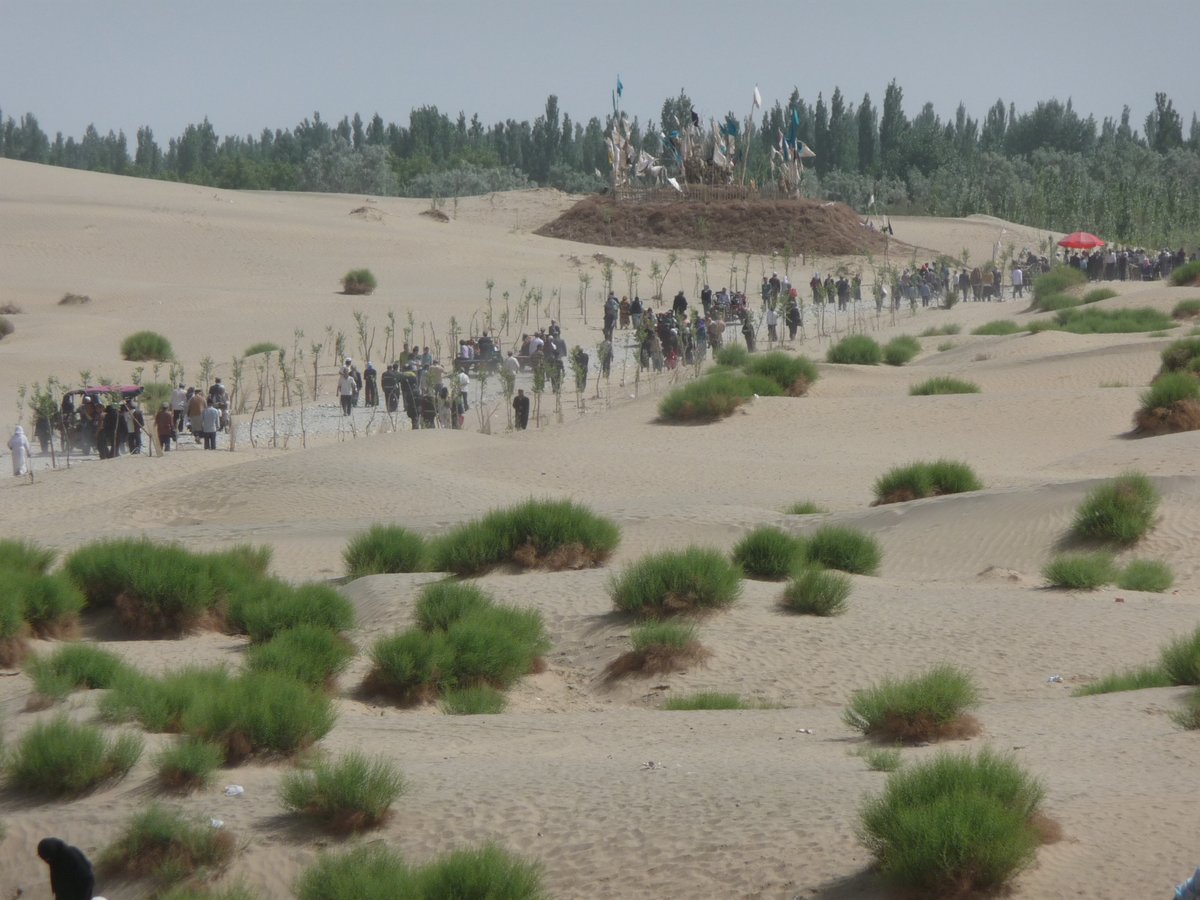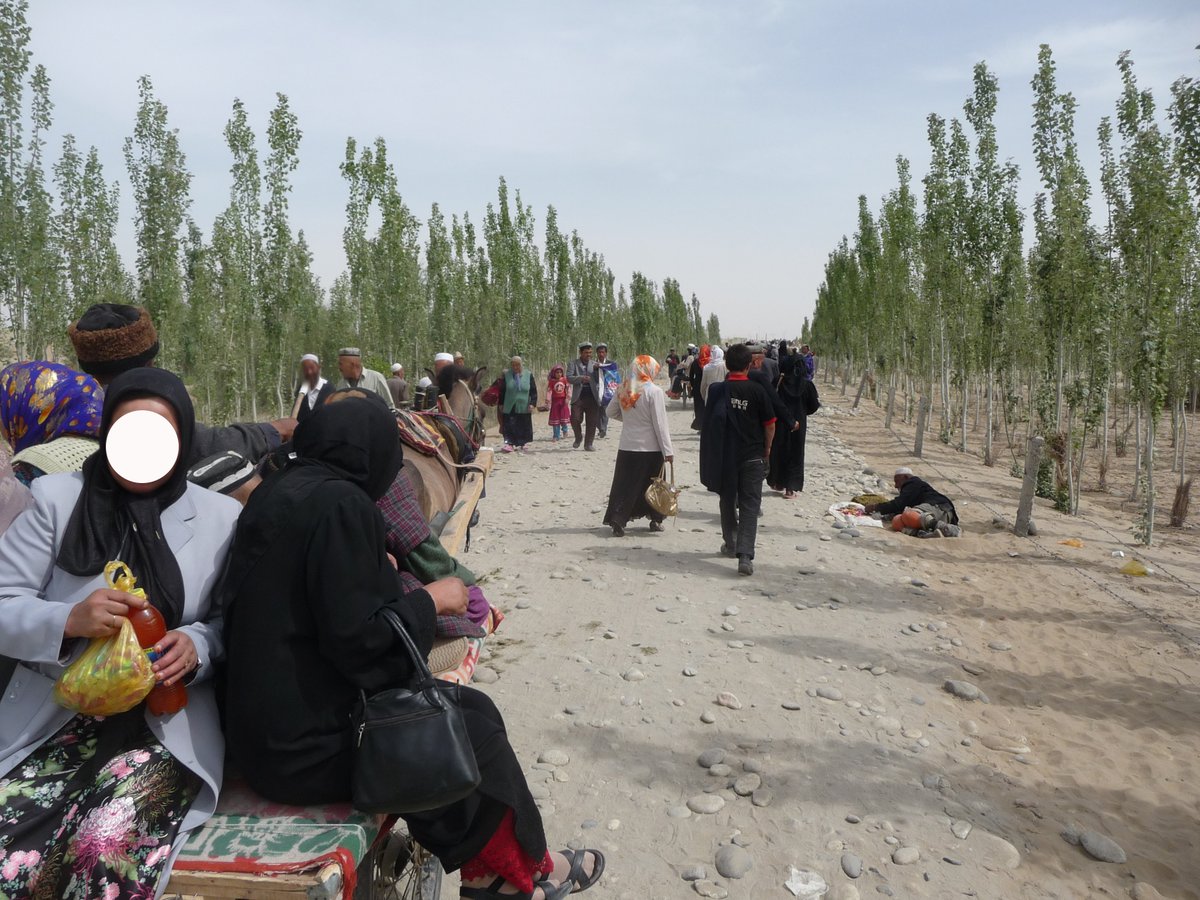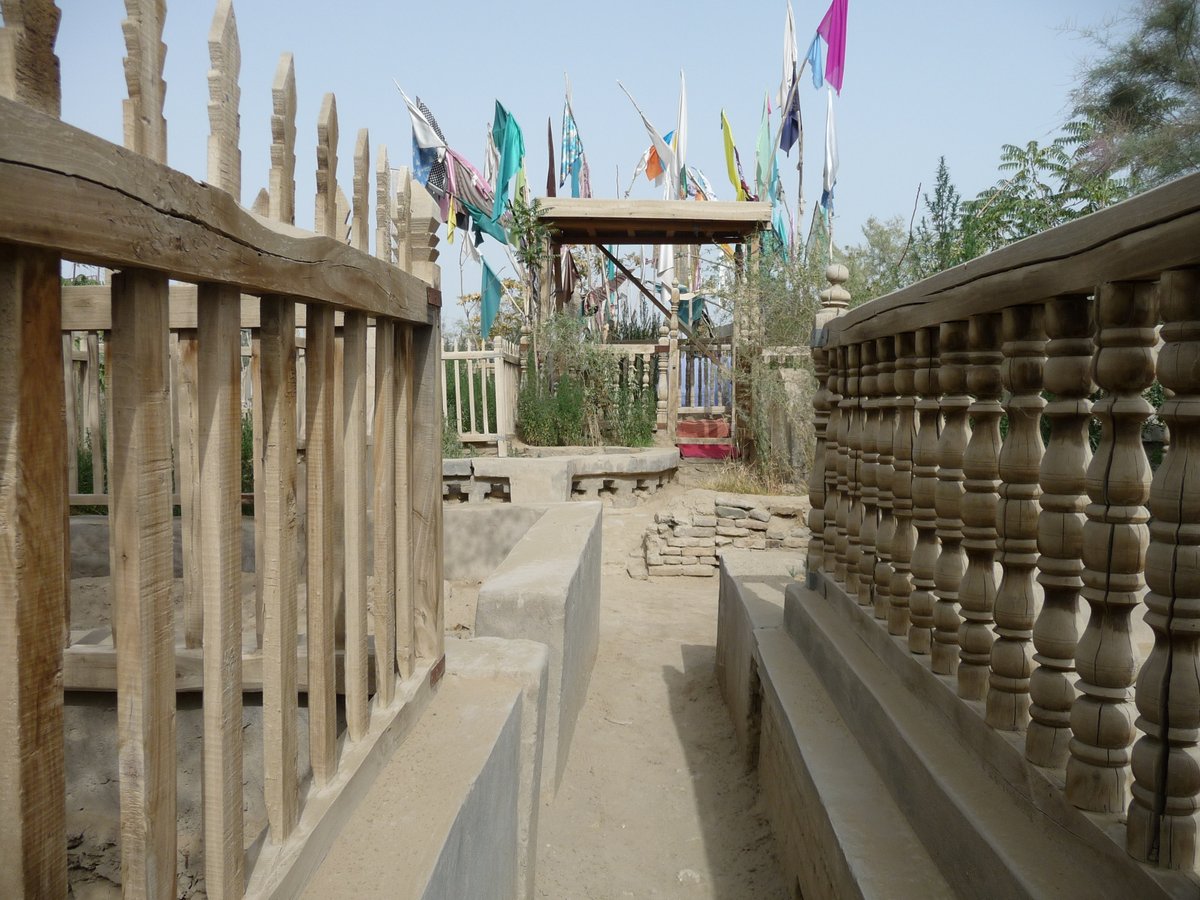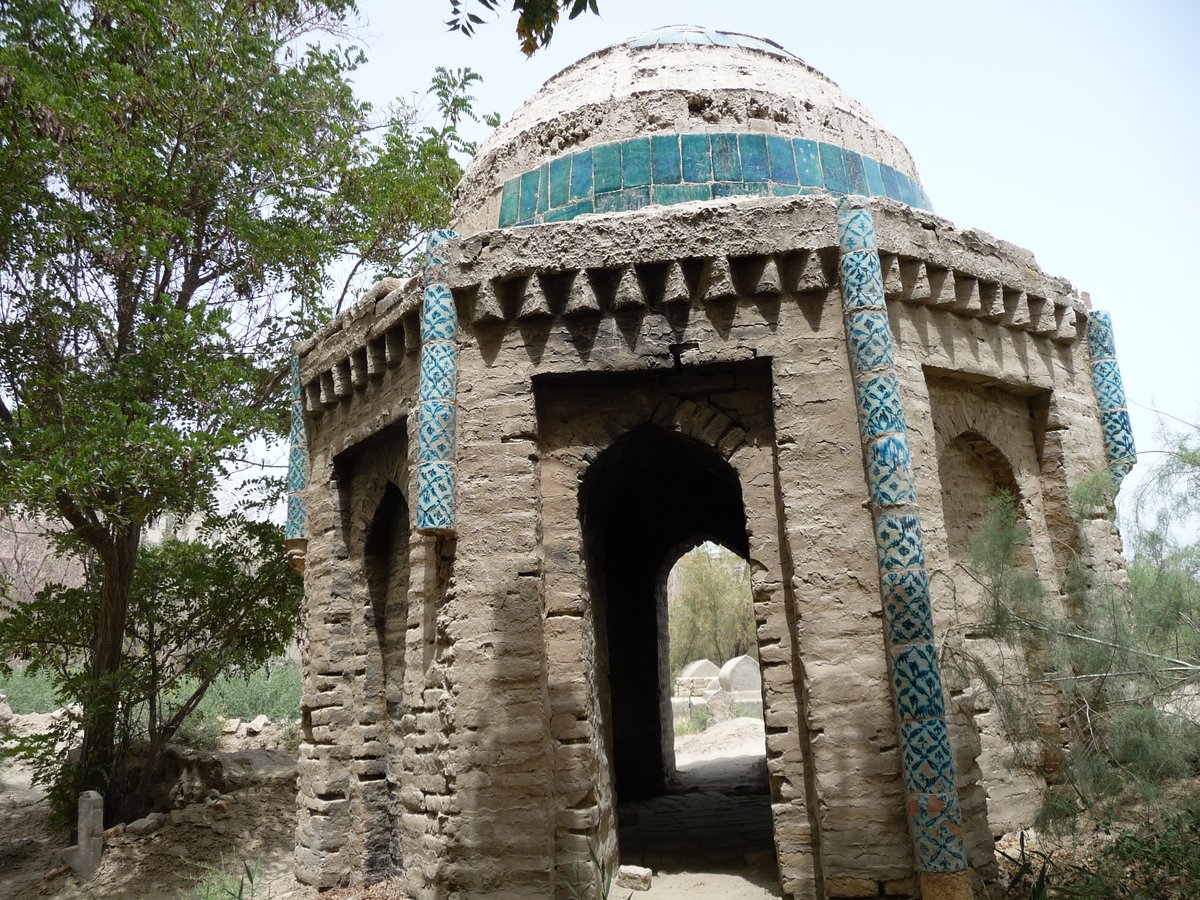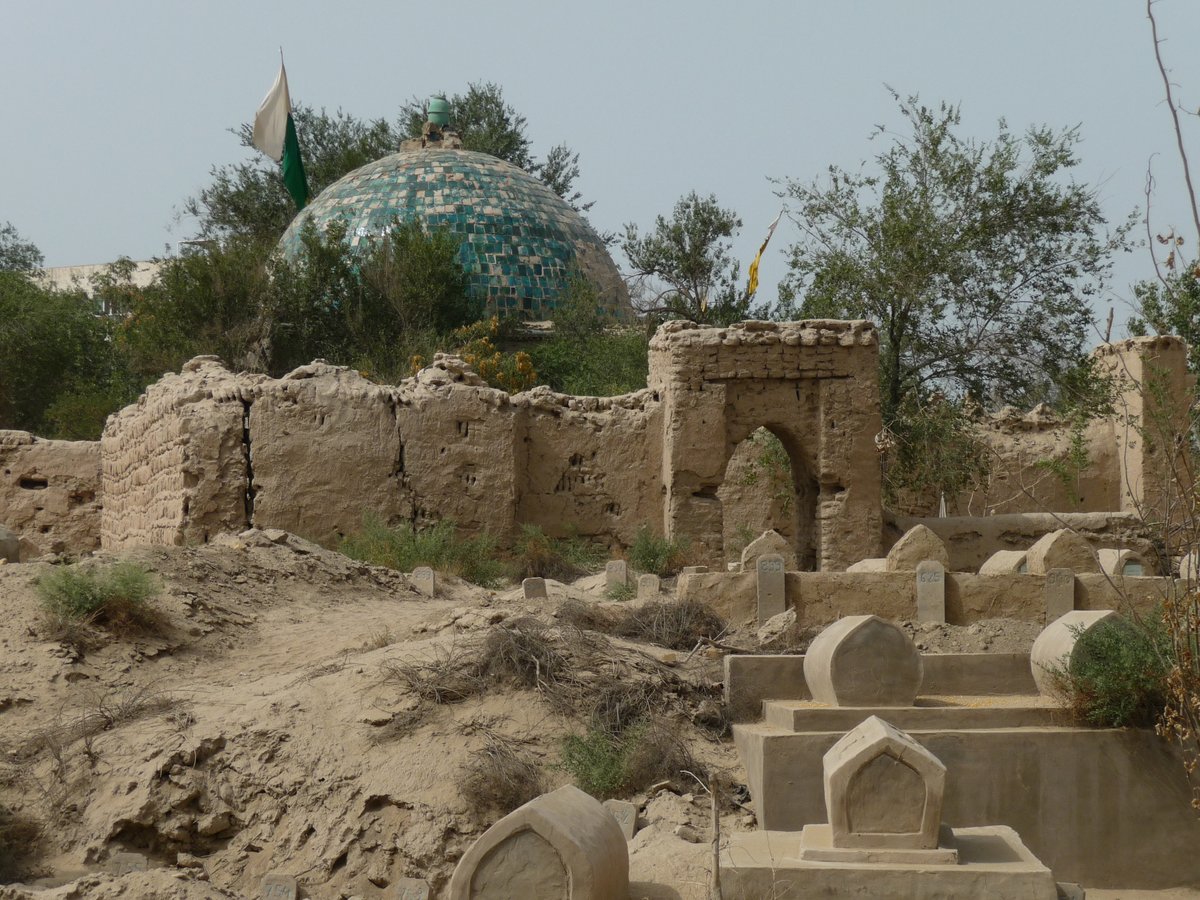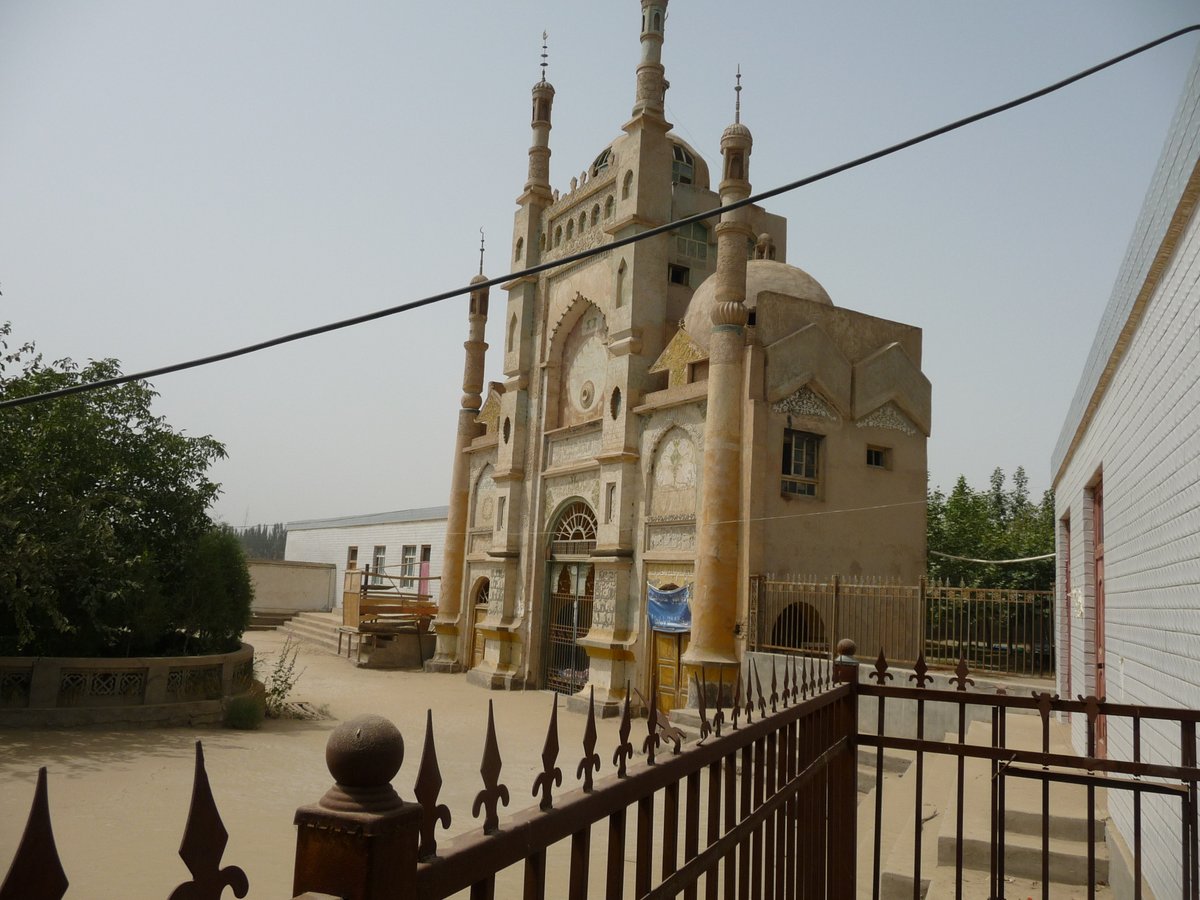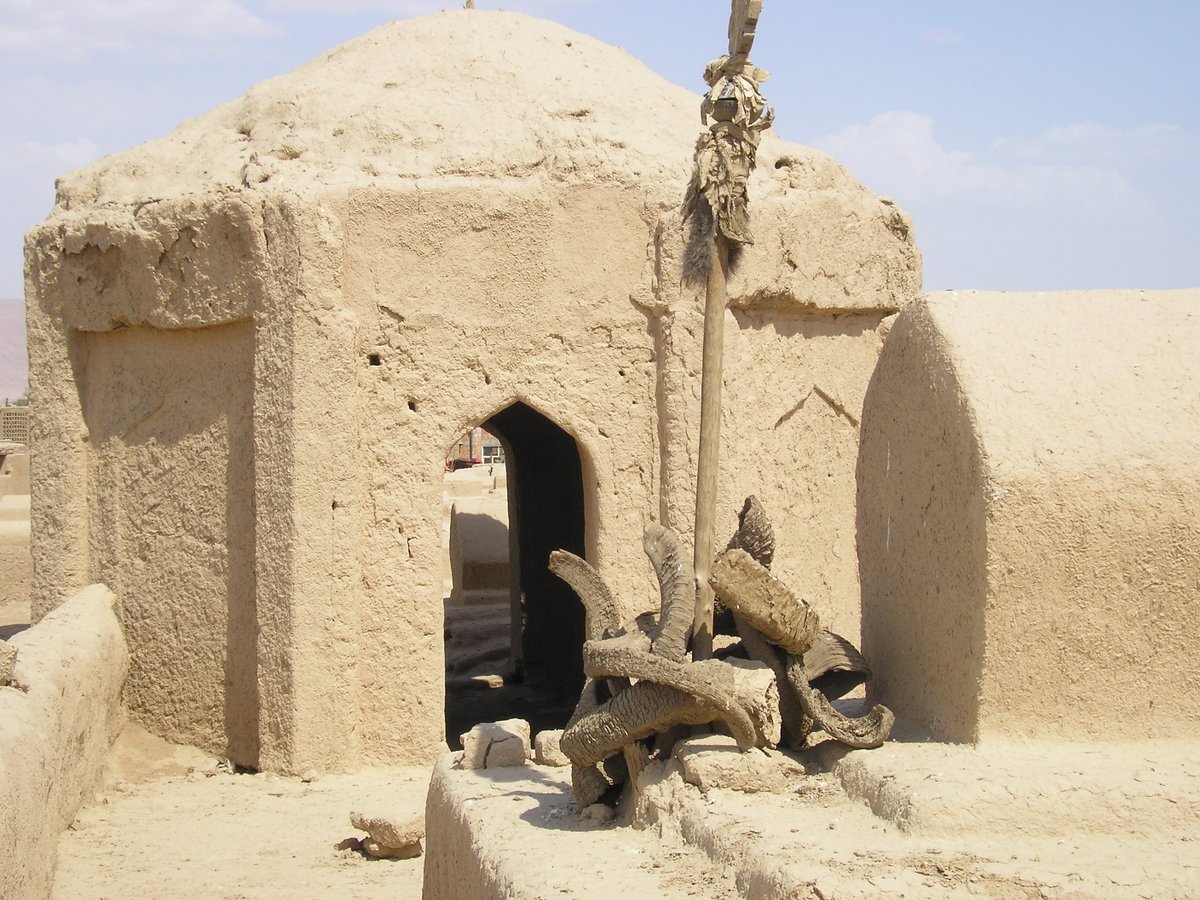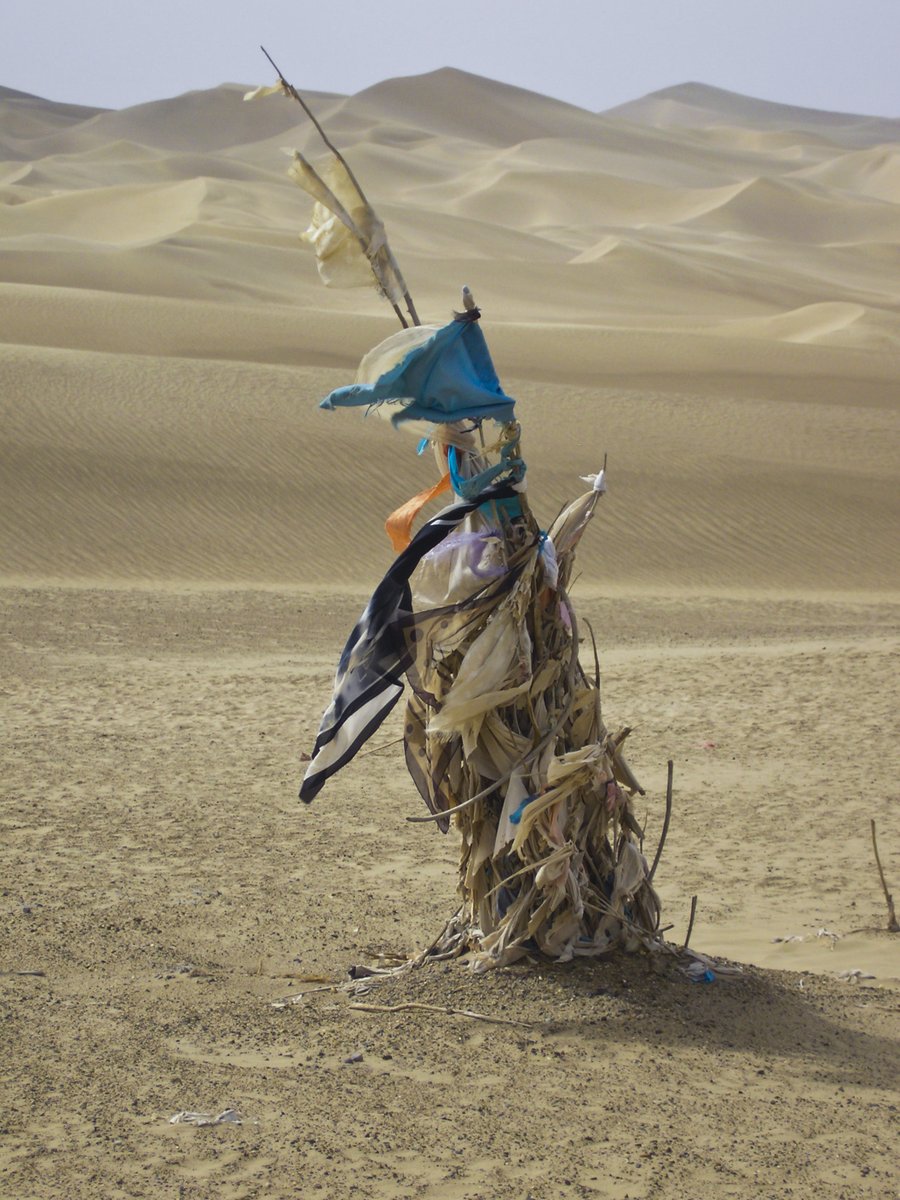
Before and after pics of a Uyghur sacred historical site, Imam Asim, desecrated by China's authorities.
Thread on what it means for Uyghur culture to be destroyed, using photos of what has been lost in the banning of the shrine festival at Imam Asim.

Thread on what it means for Uyghur culture to be destroyed, using photos of what has been lost in the banning of the shrine festival at Imam Asim.
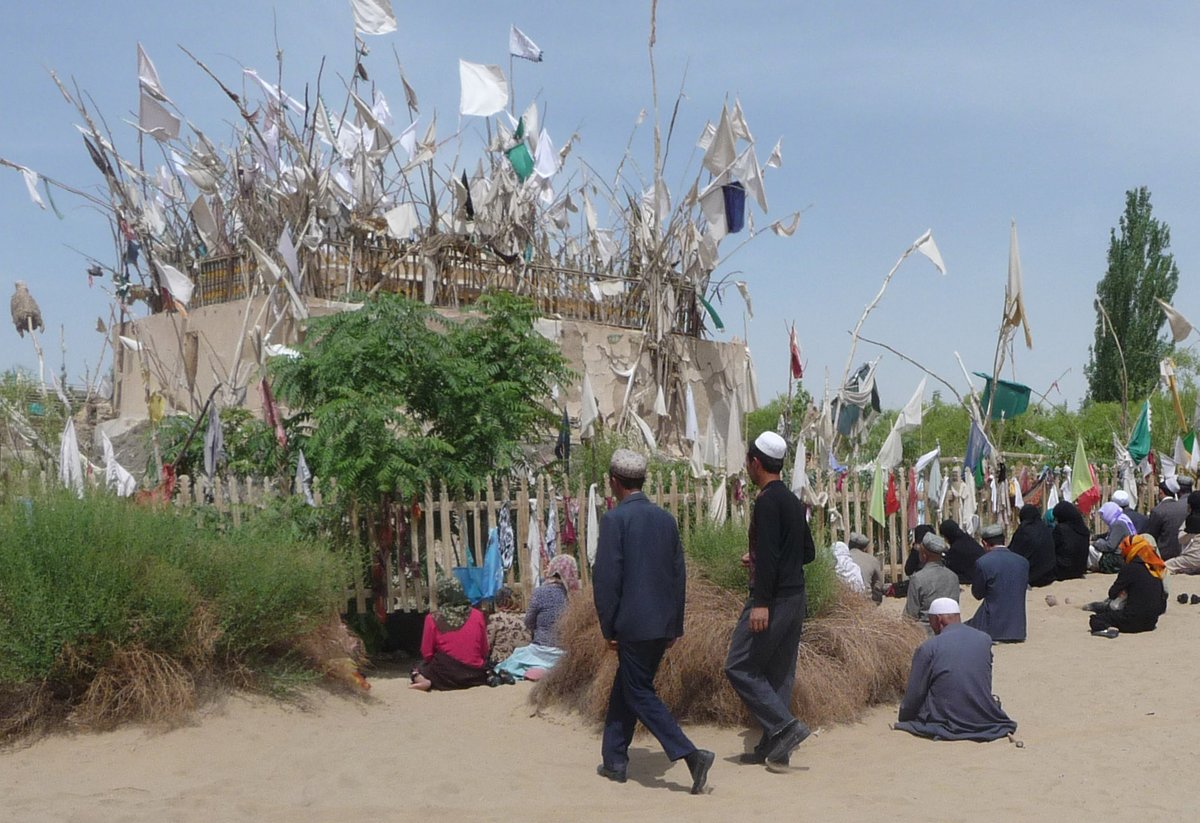
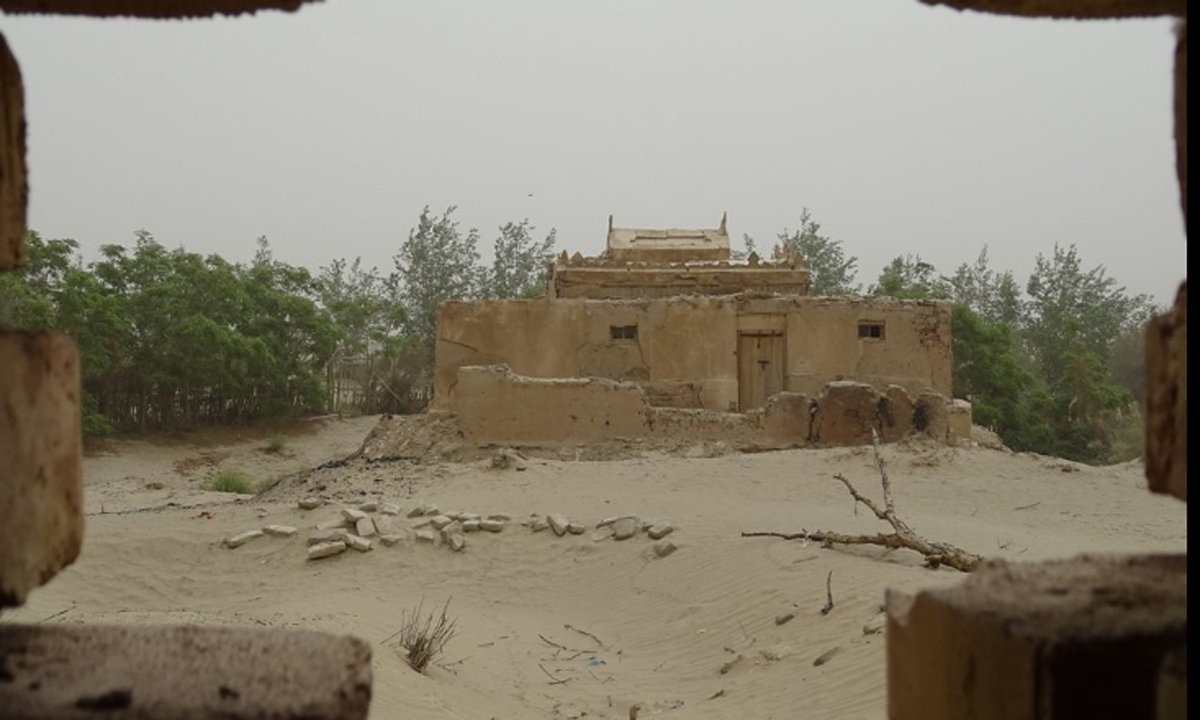
First a note on the photos: faces have been distorted and blurred. This is because authorities have put people in internment camps for religious activities they participated in as long as ten years ago. 
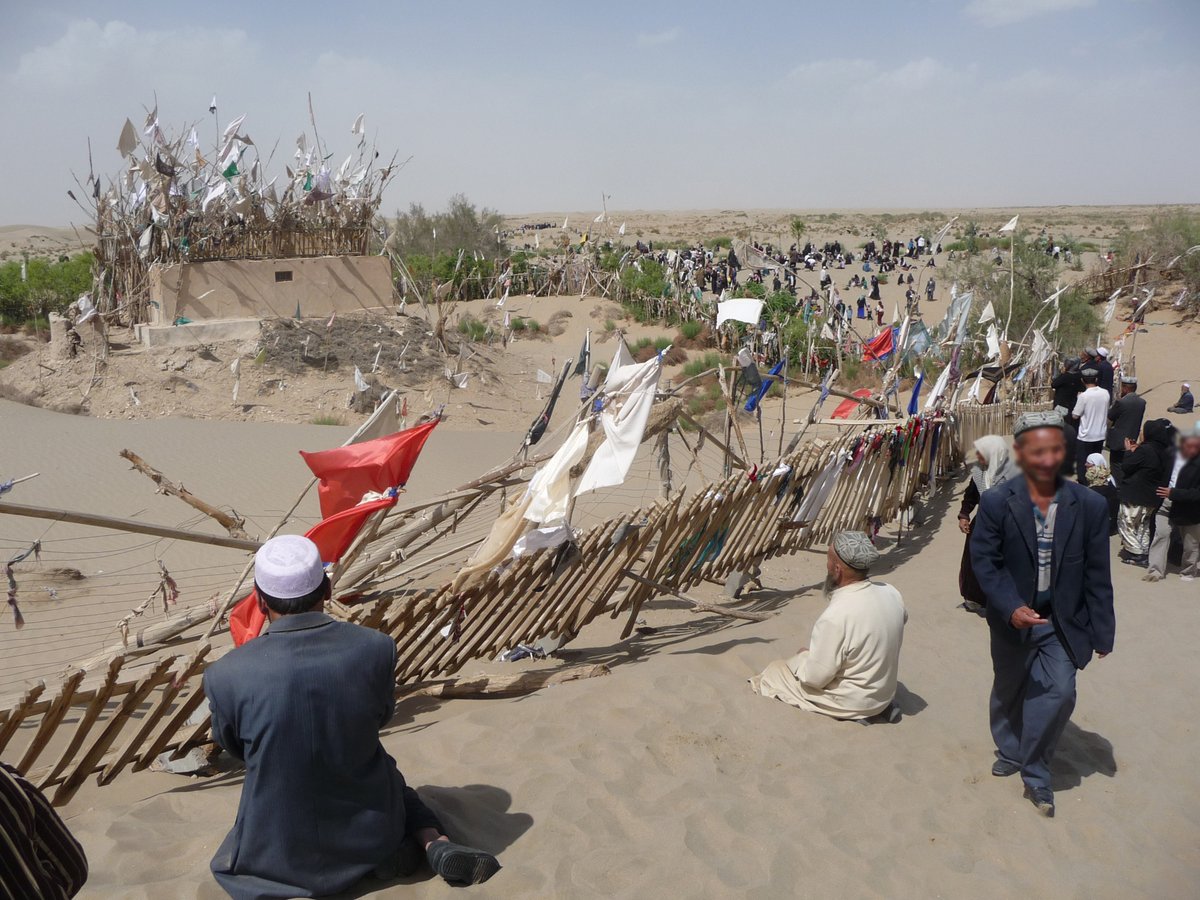
All but the desecration image in tweet#1 are by me, from visits in 2008, 2010, & 2013. Desecration pic from tripadvisor user marceltraveller.
https://twitter.com/RianThum/status/1129130386464935938
Every year in late spring, pilgrims would arrive at Imam Asim, near Khotan, in the thousands. The first stop was a special seasonal market at the edge of the desert, with children's rides, a tight rope act, and sweets for sale. 


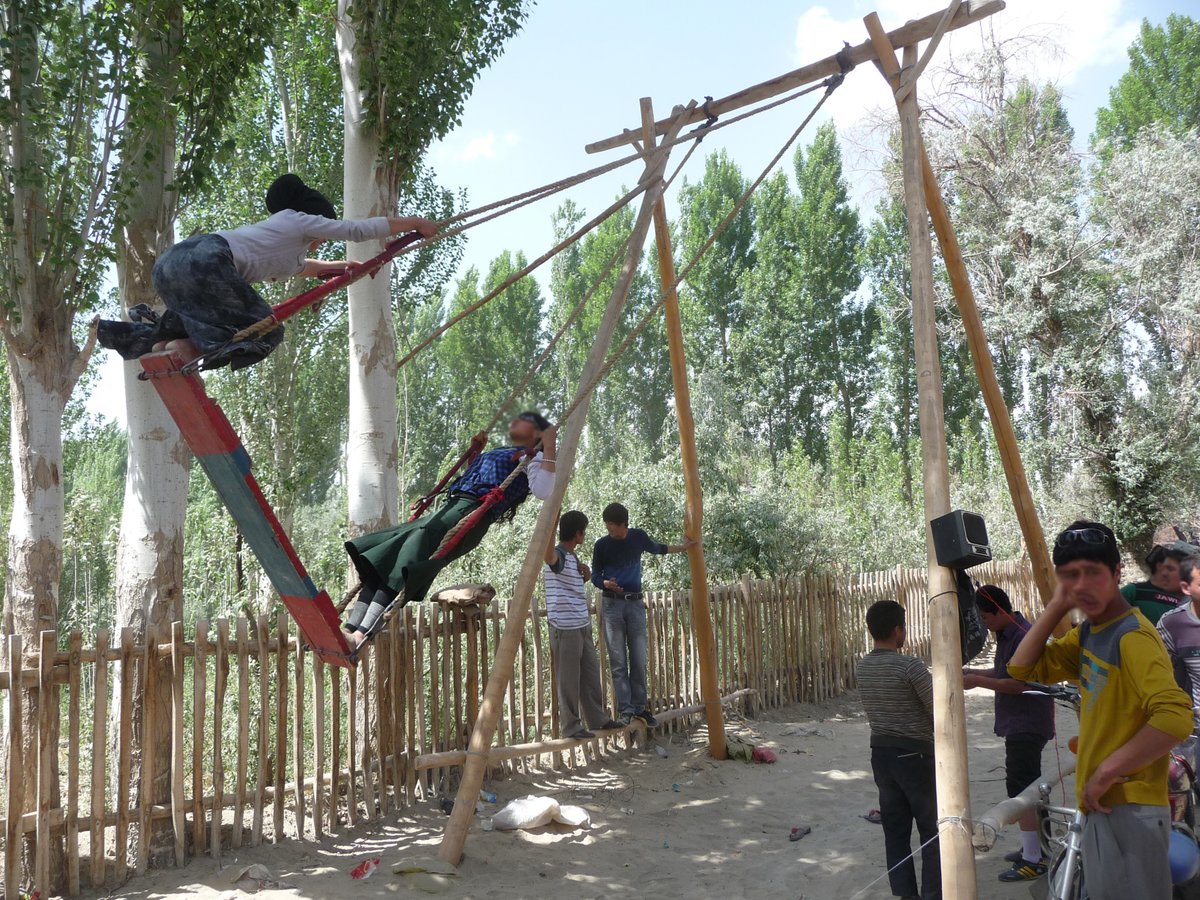
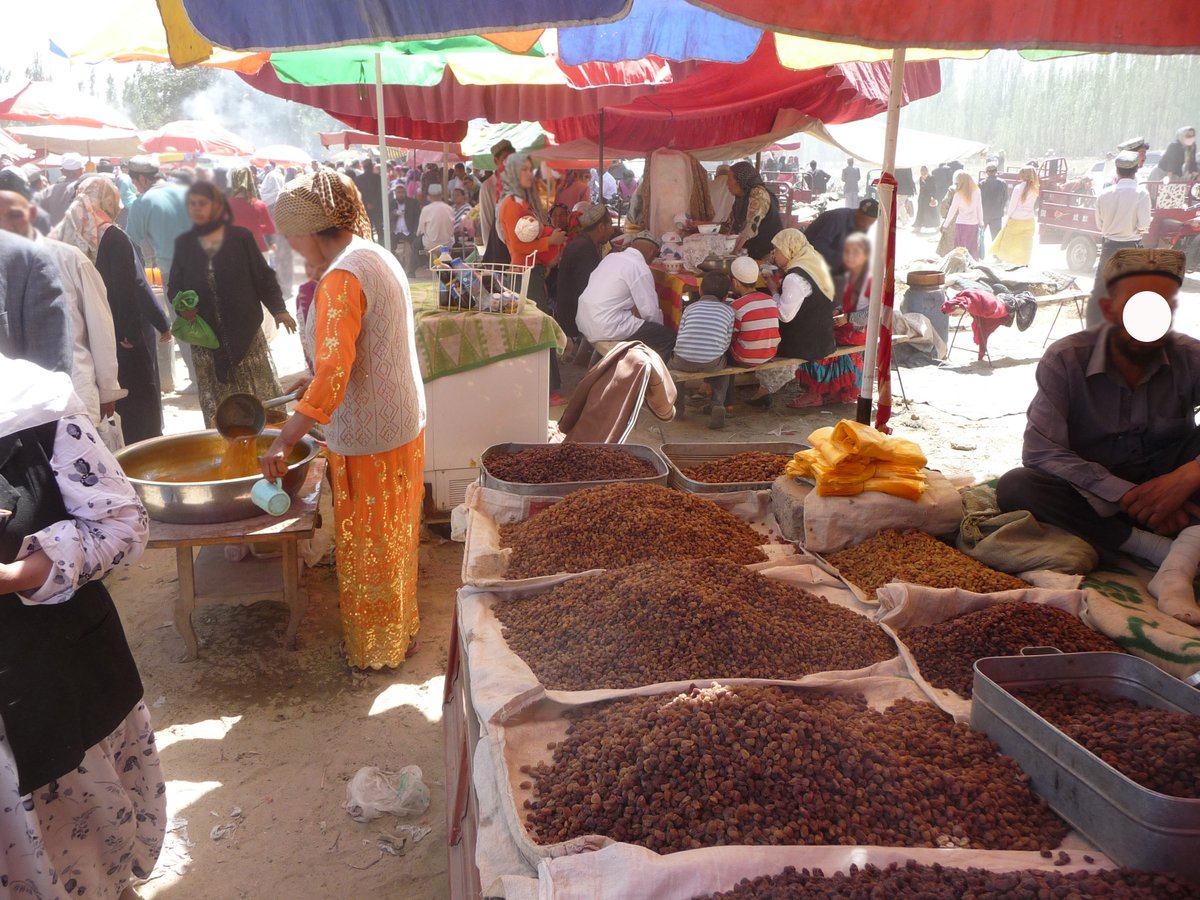
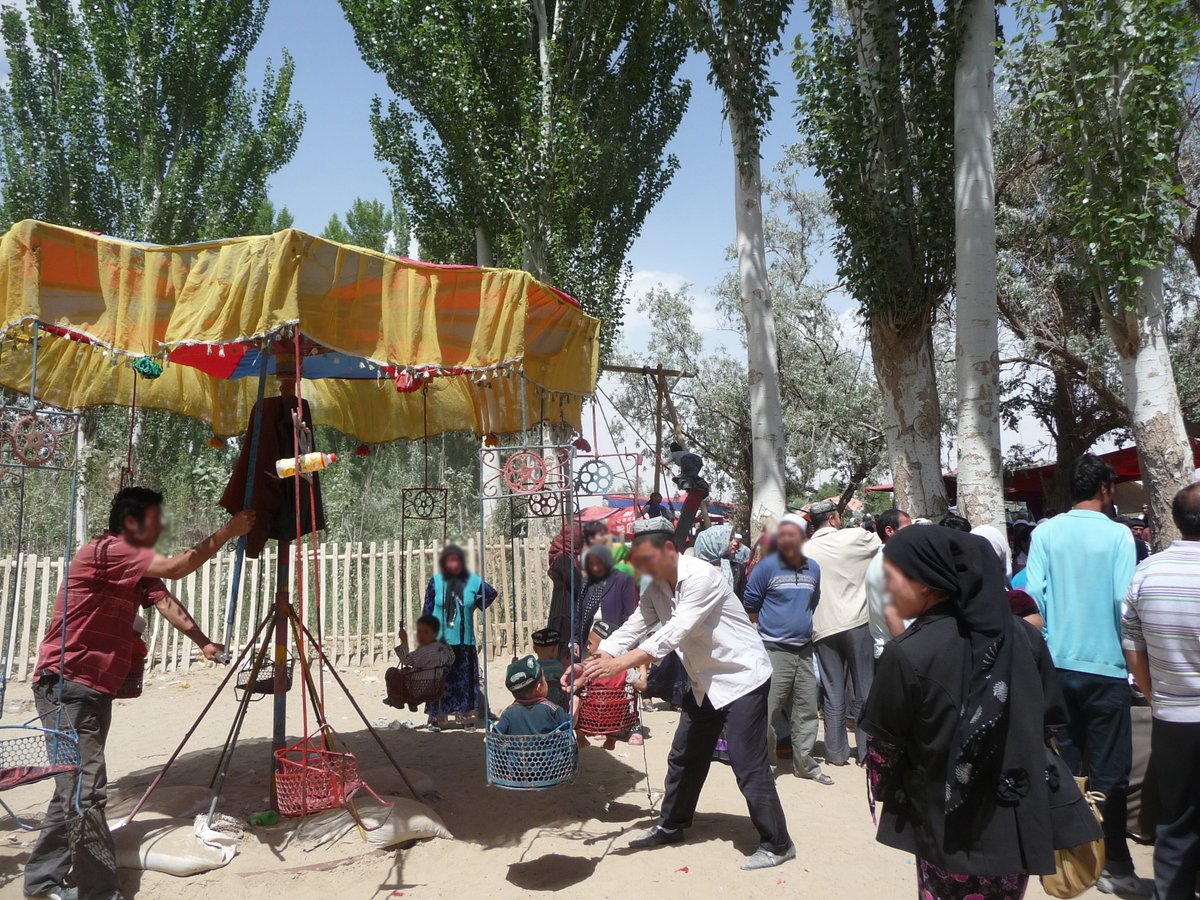
As you exited the market toward the desert, you passed rows of pious beggars, who provided the pilgrims the opportunity to engage in charity and gain merit. Some were ascetics and others ordinary impoverished people. 
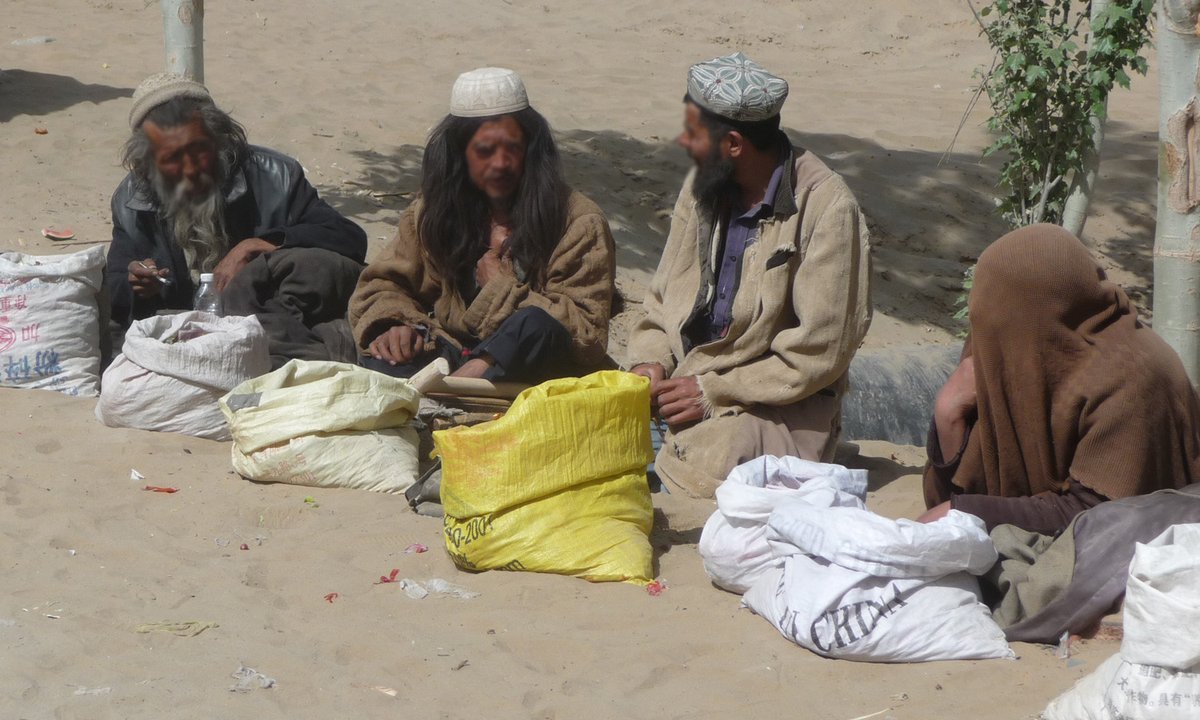
The distance from the market to the main shrine was about 1 kilometer. One option was to take camels. This was prob. more for entertainment than anything else. Camels are used widely in the region for transportation, but normally for pulling carts, not riding. 
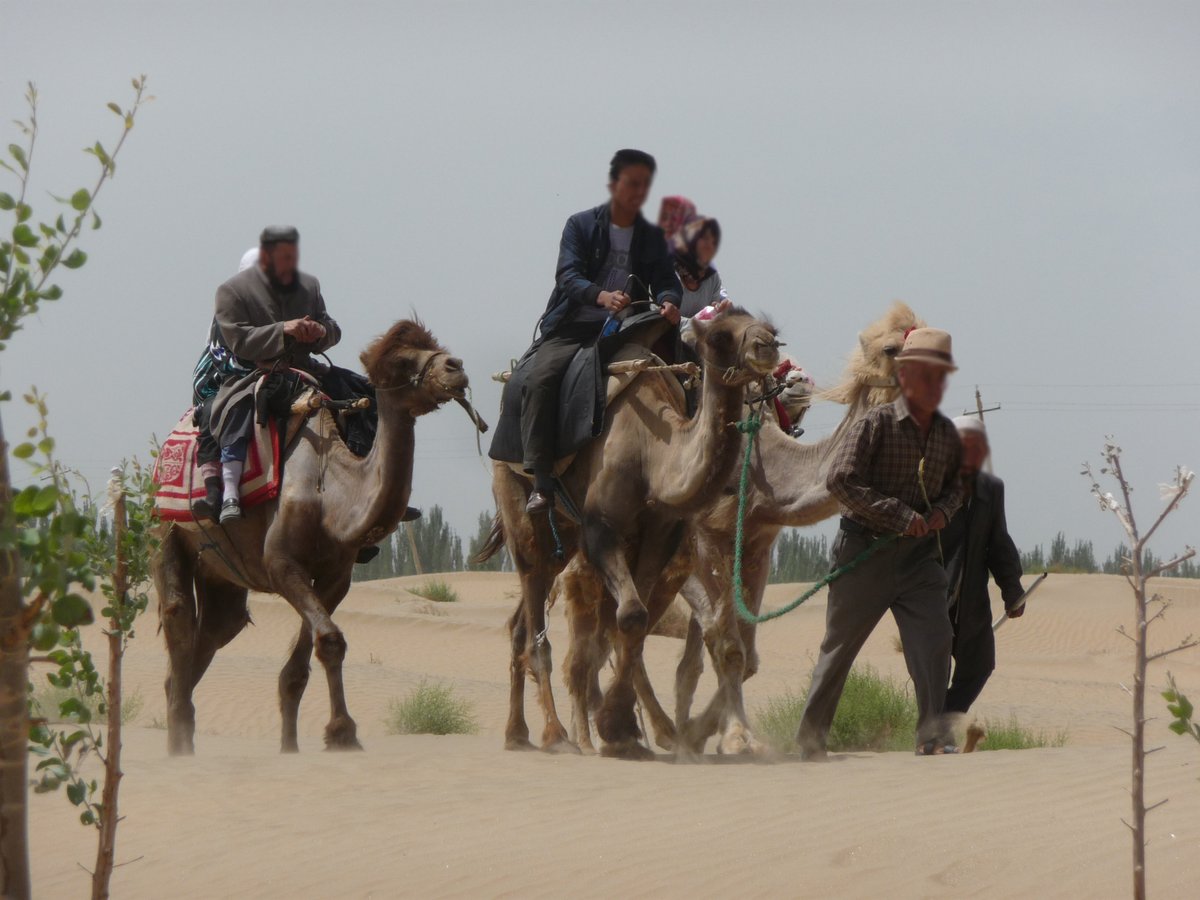
About halfway along there is a smaller shrine that people stopped to pray at. Some said it was the tomb of Imam Hashim. 
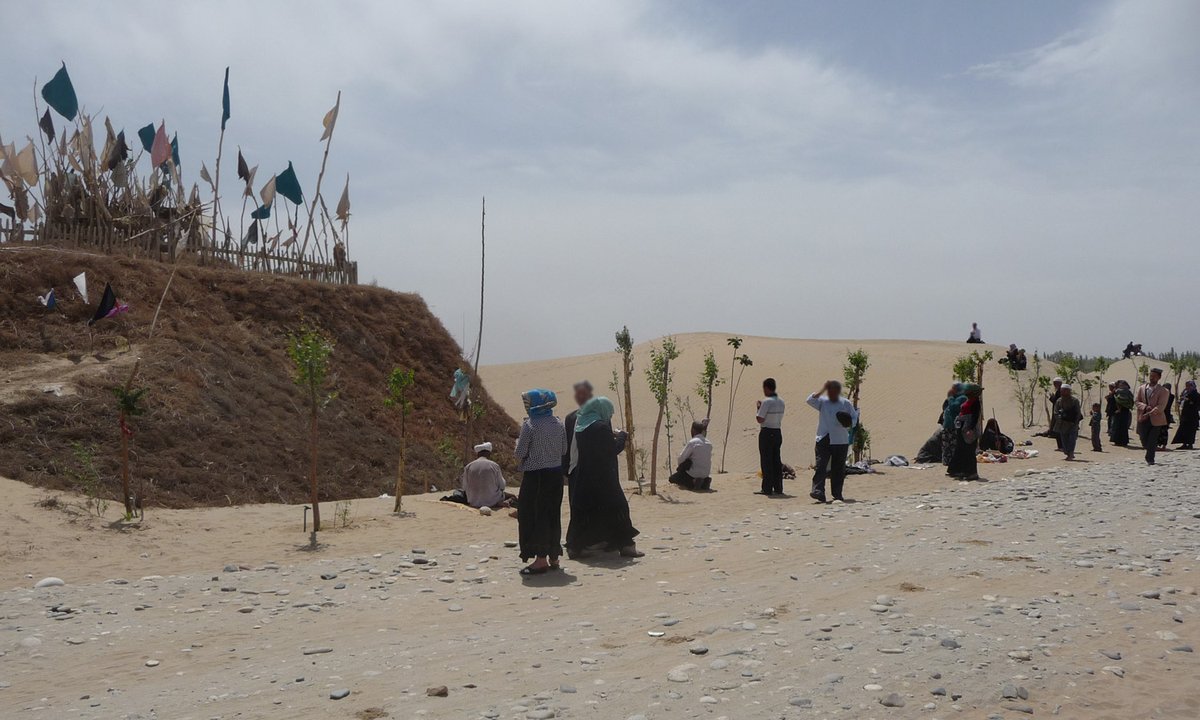
Forgot to mention, on the edge of the market area, musicians and storytellers performed, some narrating the histories of the saints. 
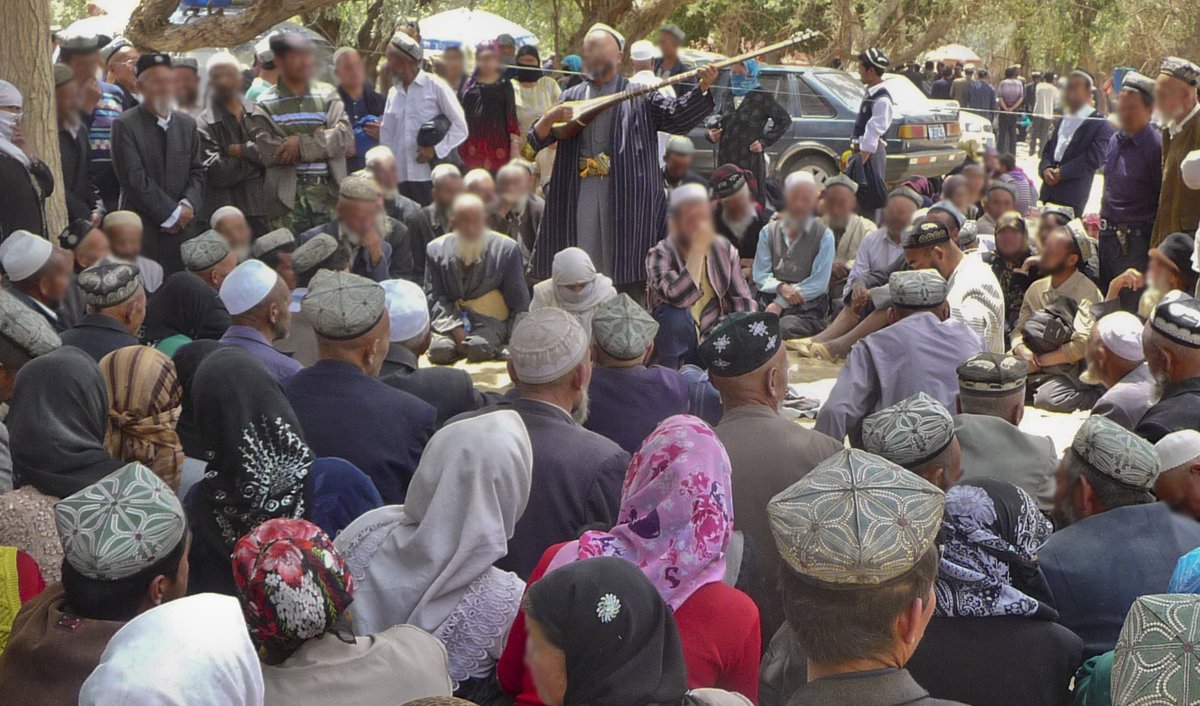
At the main shrine, where a Muslim warrior hero of ca. 1000 CE is said to be buried, people recited parts of the Qur'an and made personal pleas for intercession by the saint, e.g. for forgiveness, healing, pregnancy, prosperity. 
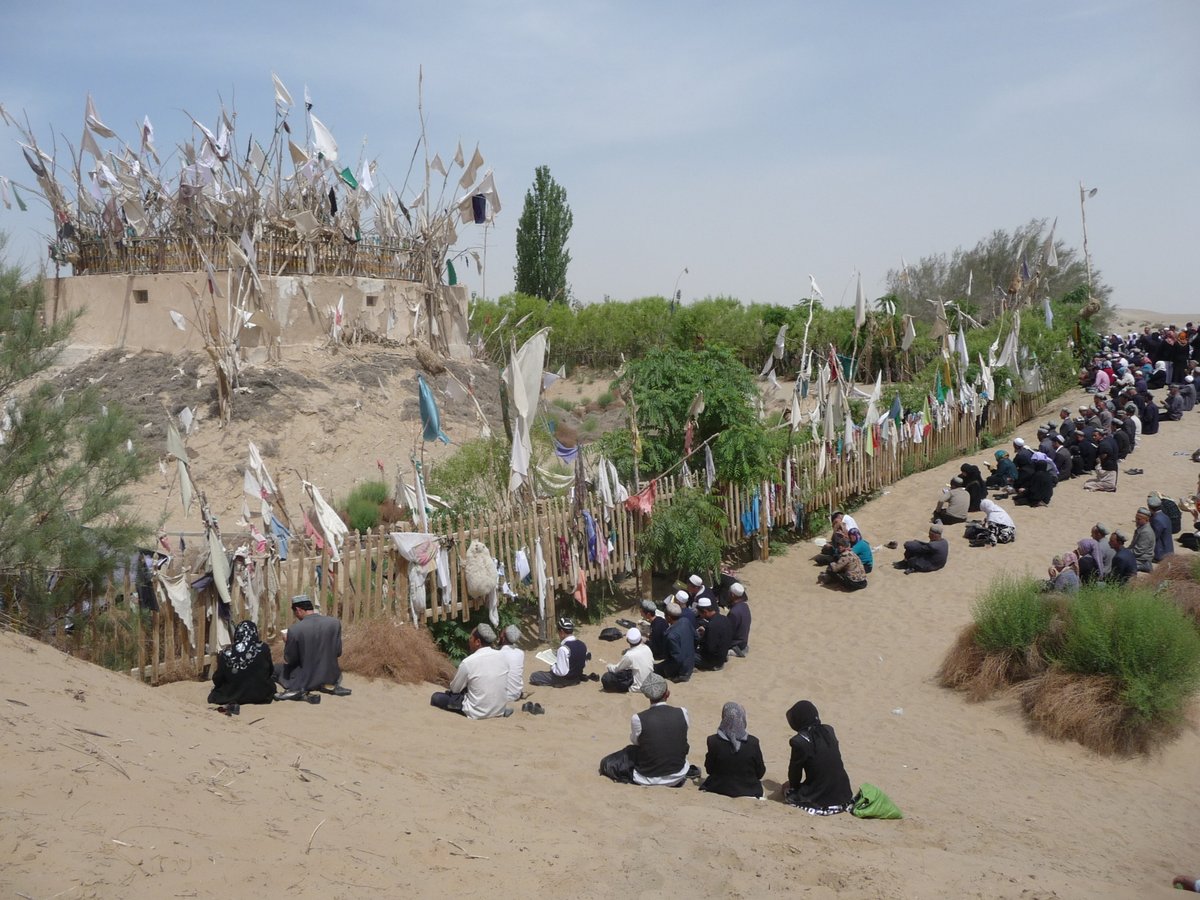
Many people partly buried themselves in the sand, which is thought to have health-giving properties. 
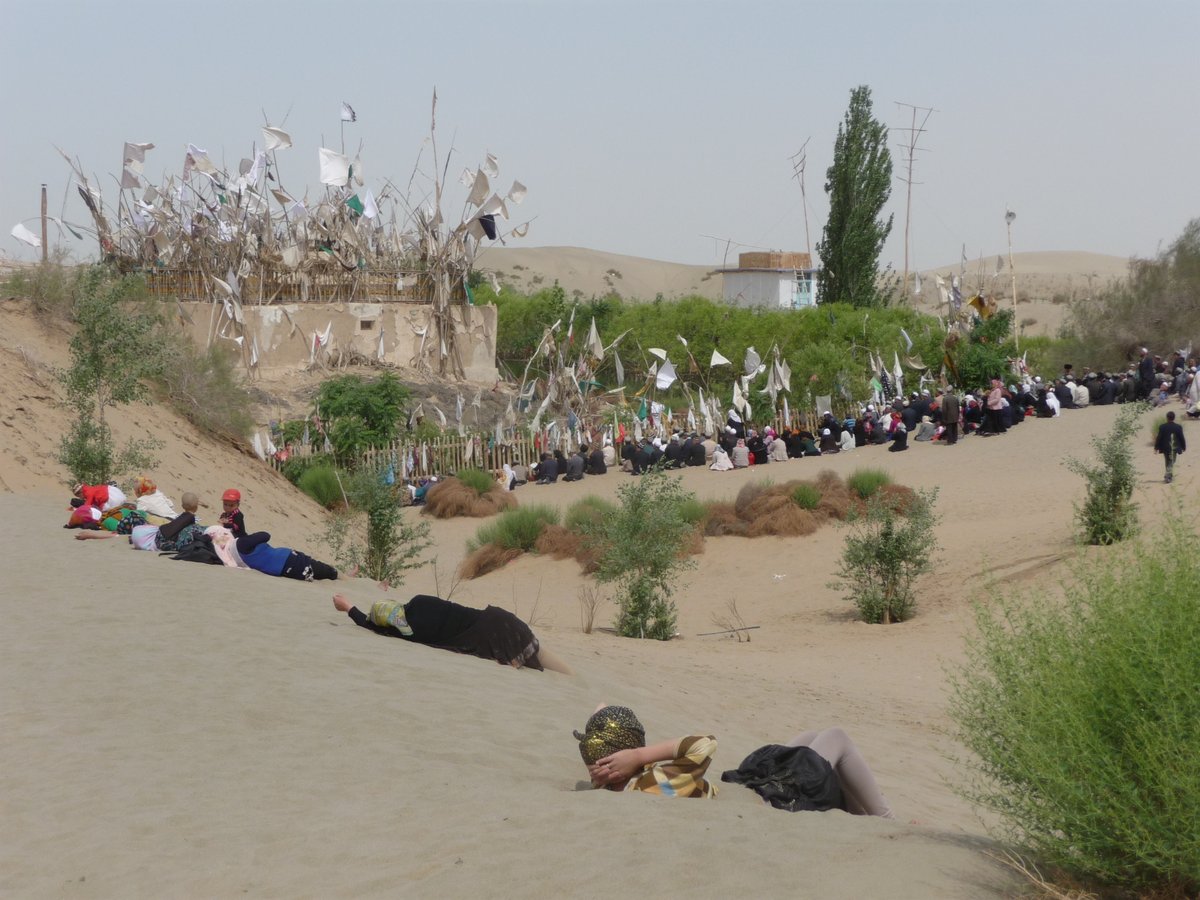
Alongside the shrine was a mosque (now destroyed) and a kitchen. Free, communal meals were prepared and distributed to anyone willing to stand in line. 

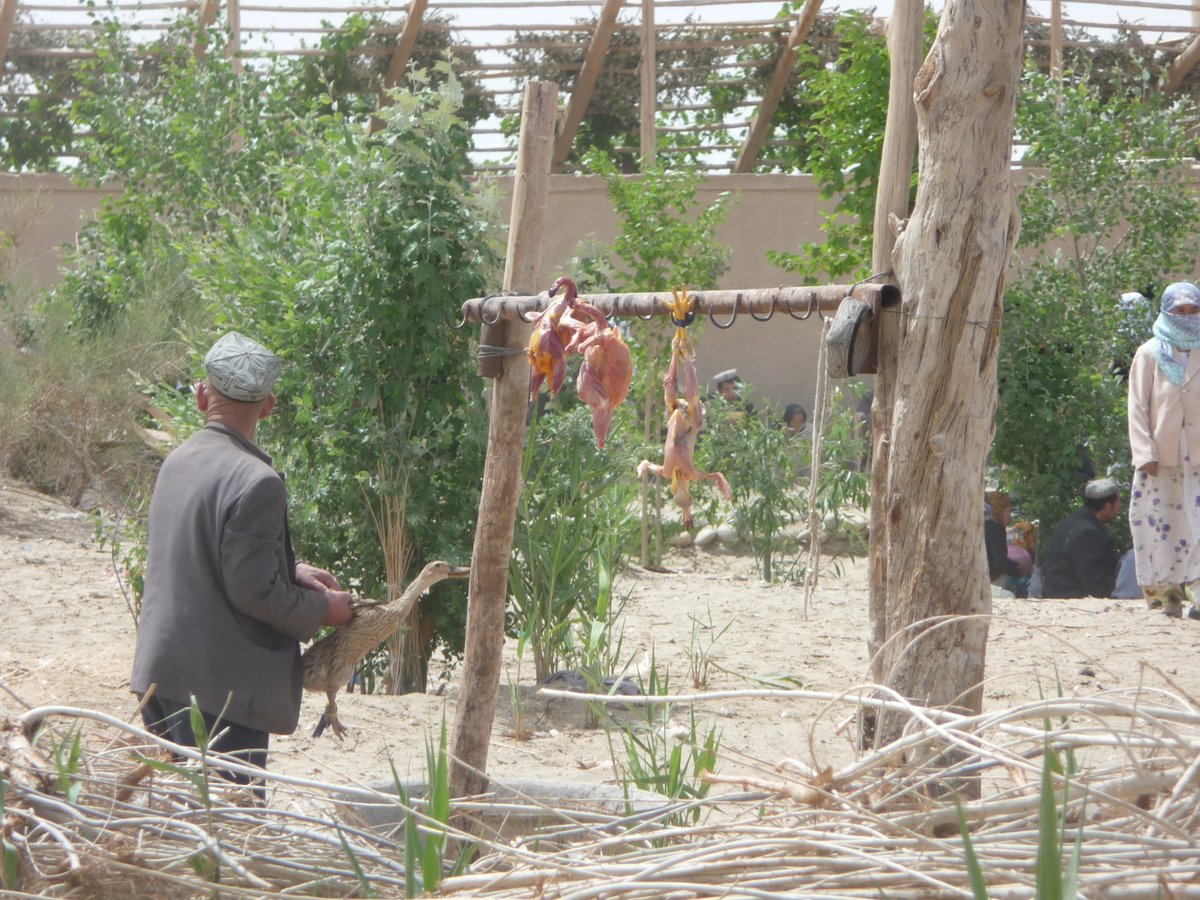
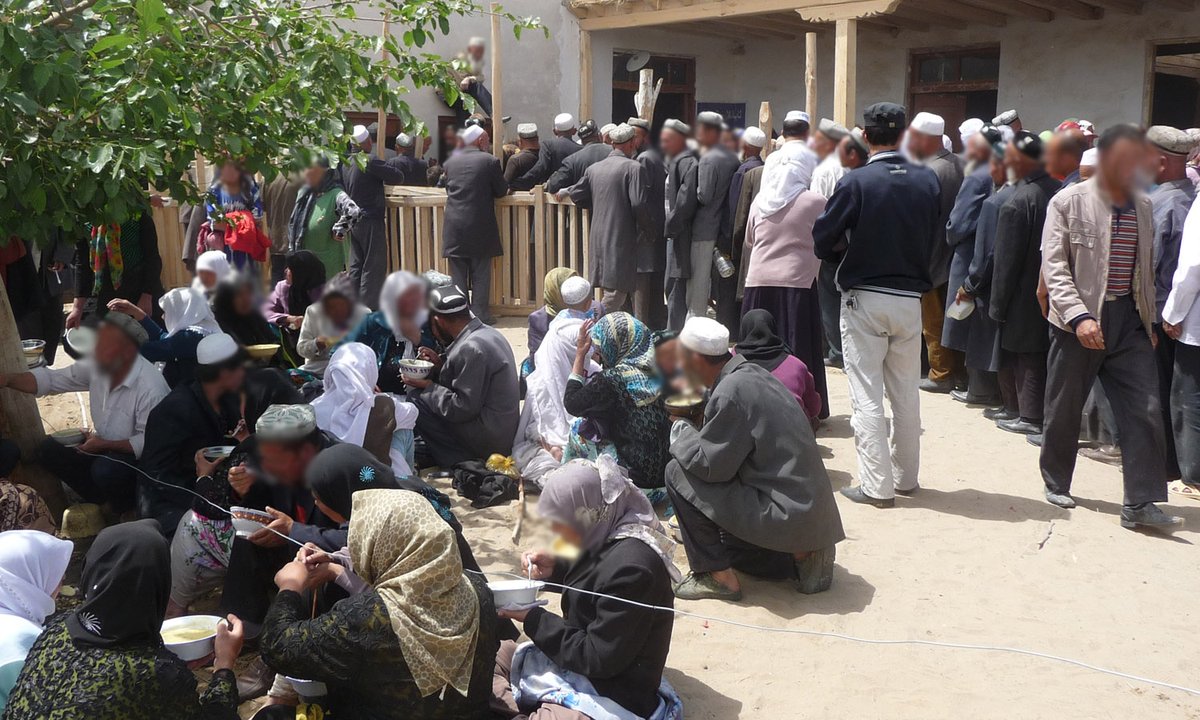
Pilgrims tied cloths to fences, planted flags, and stuffed the skins of sheep slaughtered as offerings. The mass of flags and cloths were a testimony to the unseen thousands of fellow pilgrims who visited the site over the years, a created a powerful sense of community. 

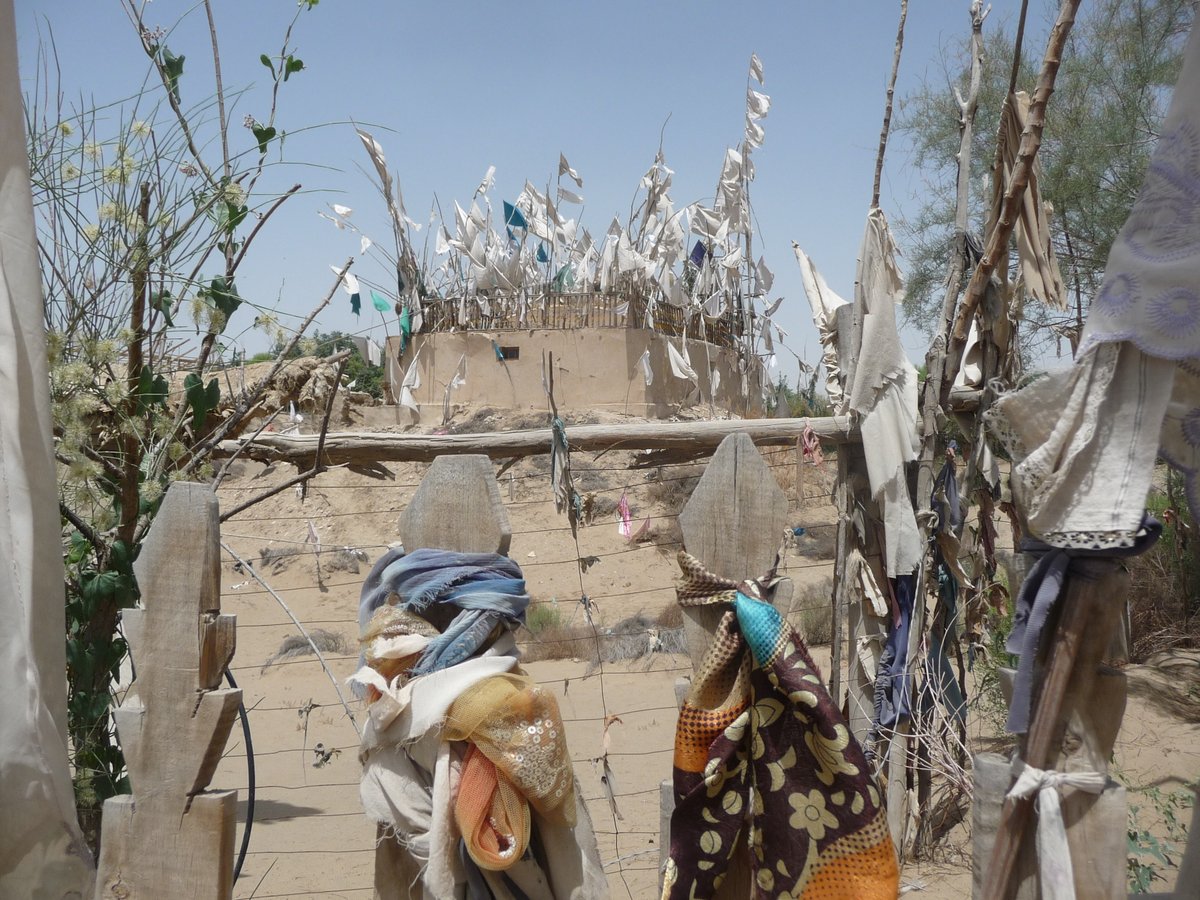
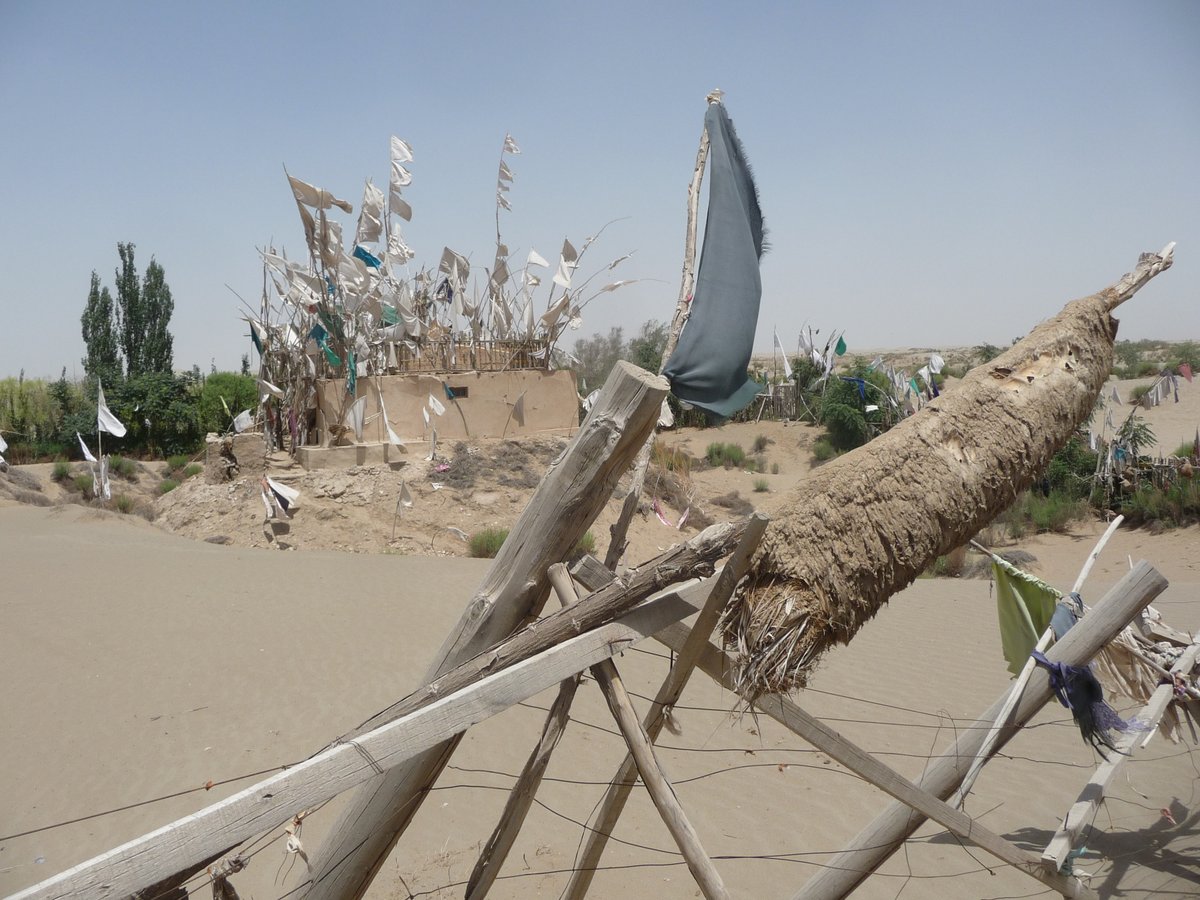
When I visited in 2013, the authorities had shut down the annual festival, but few pilgrims and I managed to evade the checkpoints. The place was mostly empty, but the shrine and devotional objects had not yet been harmed. First evidence of desecration was 2018. 
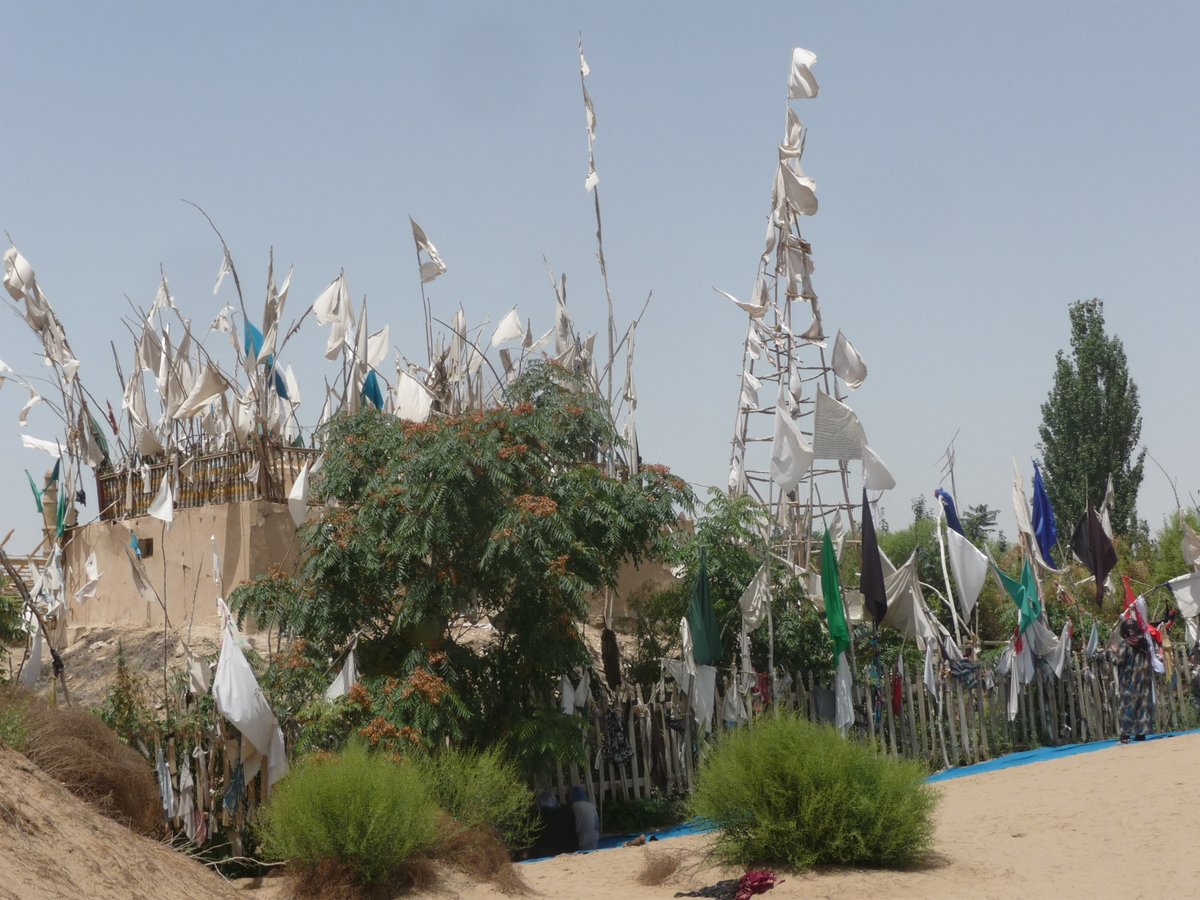
Photo of sand-bathing, picnicking, and praying. The festival mixed sacred and profane, entertainment and devotion. Early 20th c. reformists complained of trysts, hooligans, and inappropriate religious activities like rubbing one's face on the walls of the shrines. 
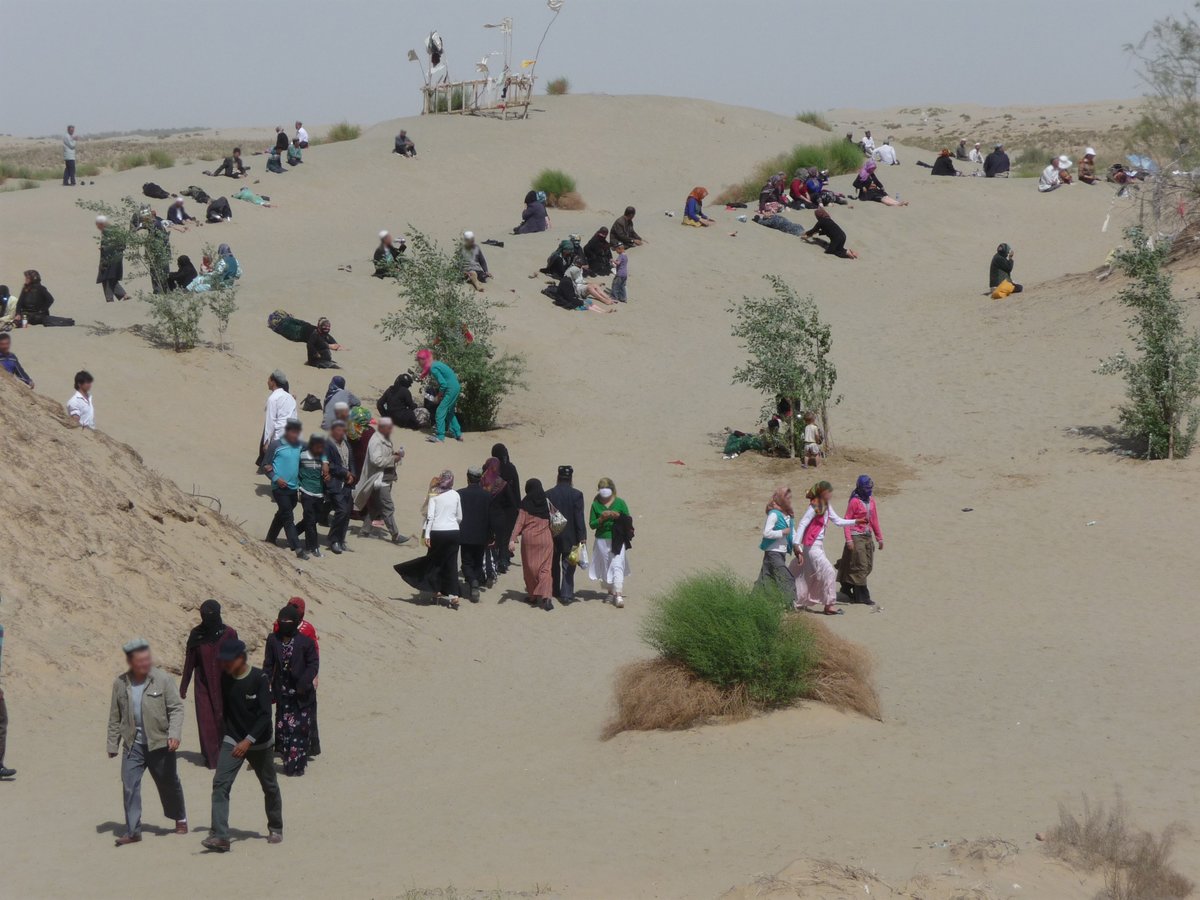
All shrine festivals have now been stopped. Imam Asim was the last. Some other shrines, like Imam Japir Sadiq, have been completely obliterated, despite being located in remote desert locations where the land has no other use. Satellite images from theguardian.com/world/2019/may… 
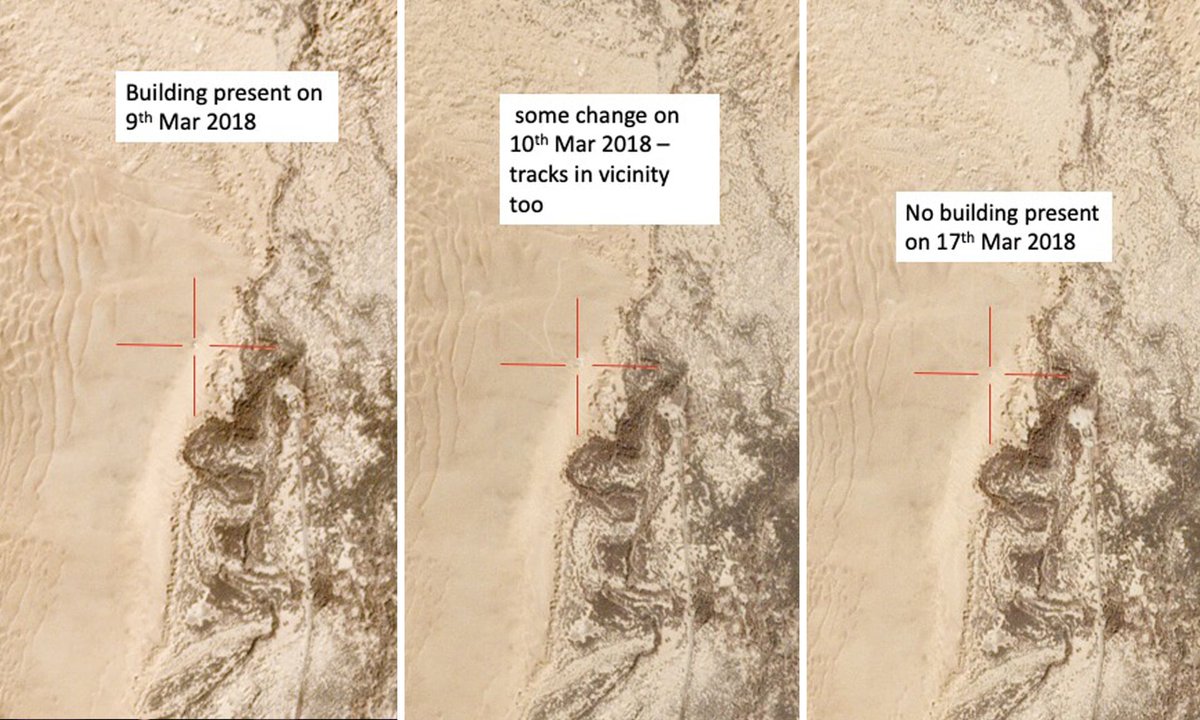
Winter image of Imam Asim I took in 2008, with the now-demolished (according to satellite imagery) mosque visible. 
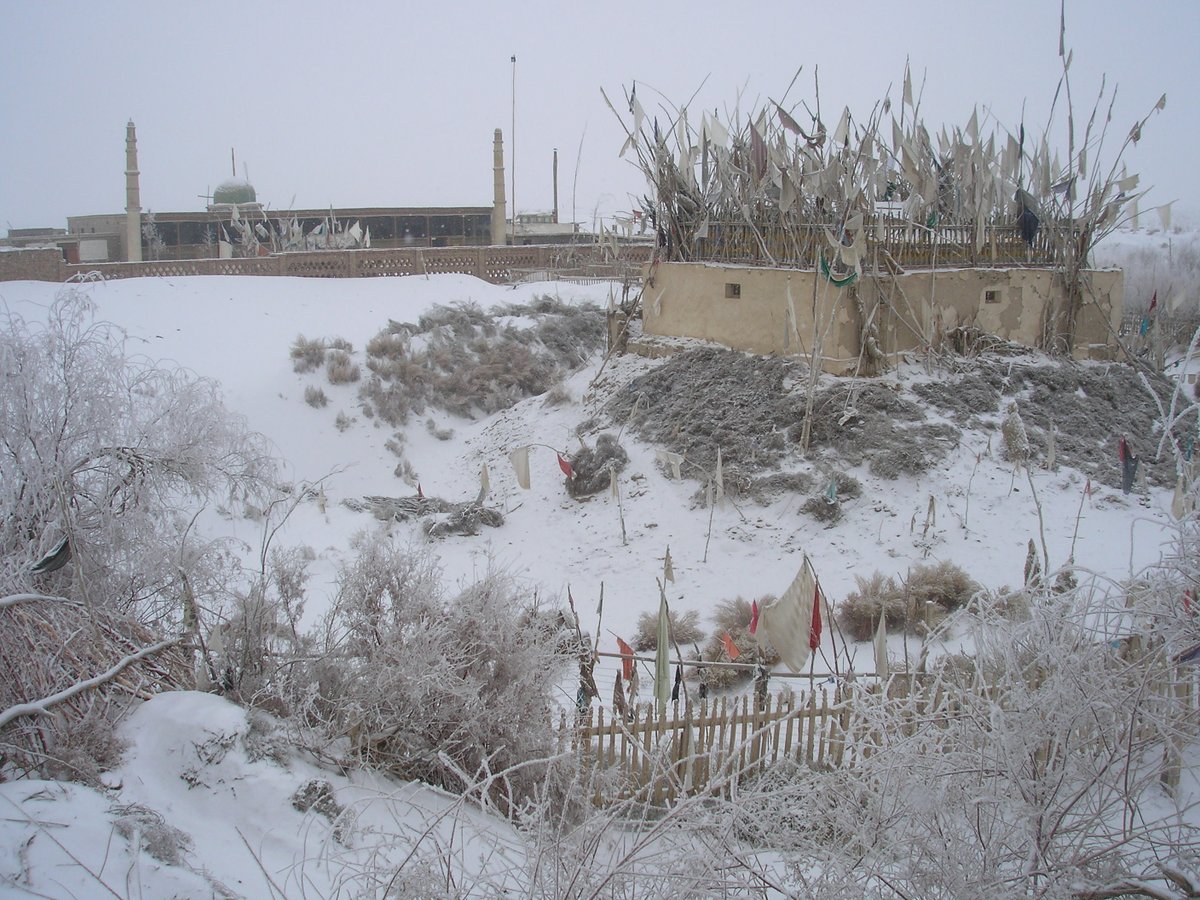
Not all shrines are being destroyed or desecrated. policies vary by locality. Satellite images suggest that this important shrine in Yarkand (left) and this one in Qaraqash (right) were still standing recently. But praying at then could now land you in a concentration camp. 

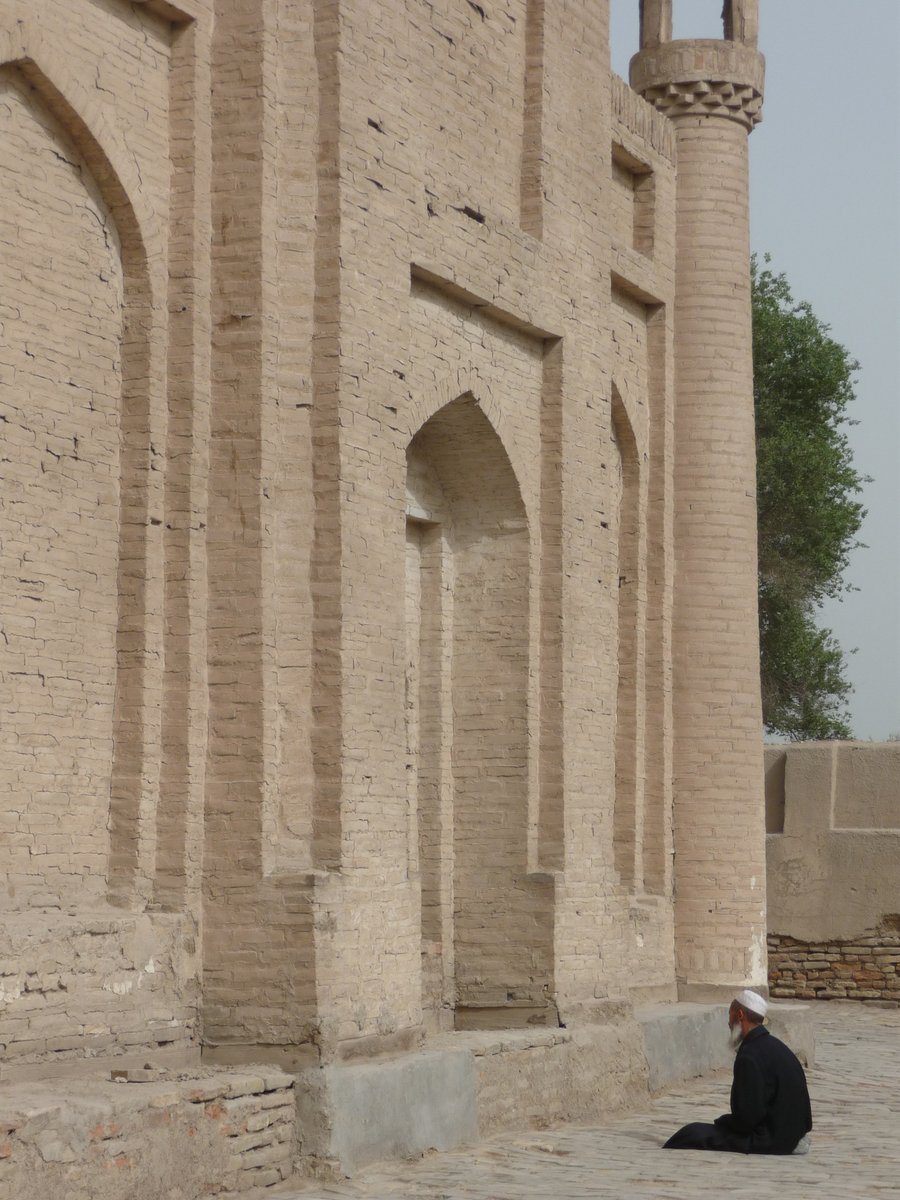
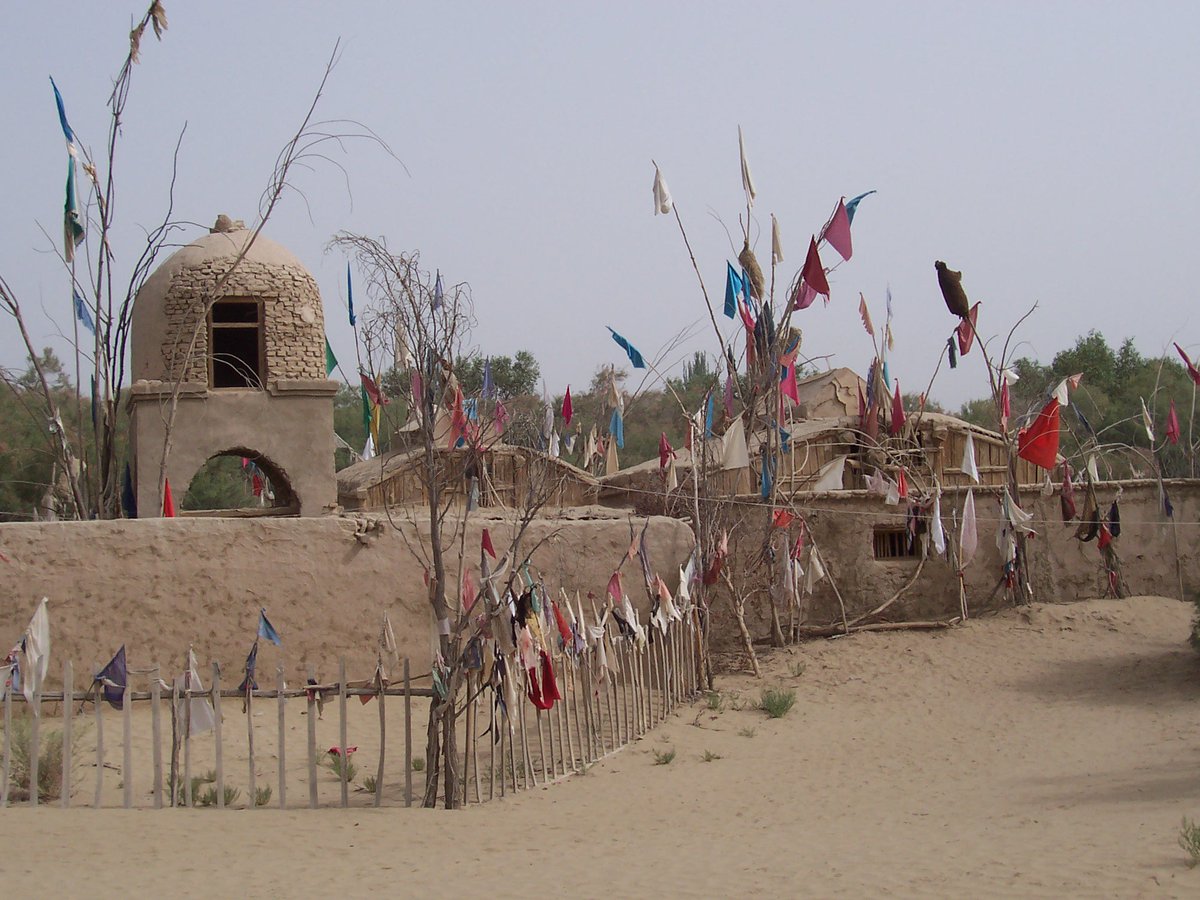
The shrine and mosque demolitions are part of a larger obliteration of Uyghur space and geography, penetrating down to the interiors of people's homes. Here is Kashgar's magnificent old city around 2007. It was demolished and replaced with a touristy imitation (right). 

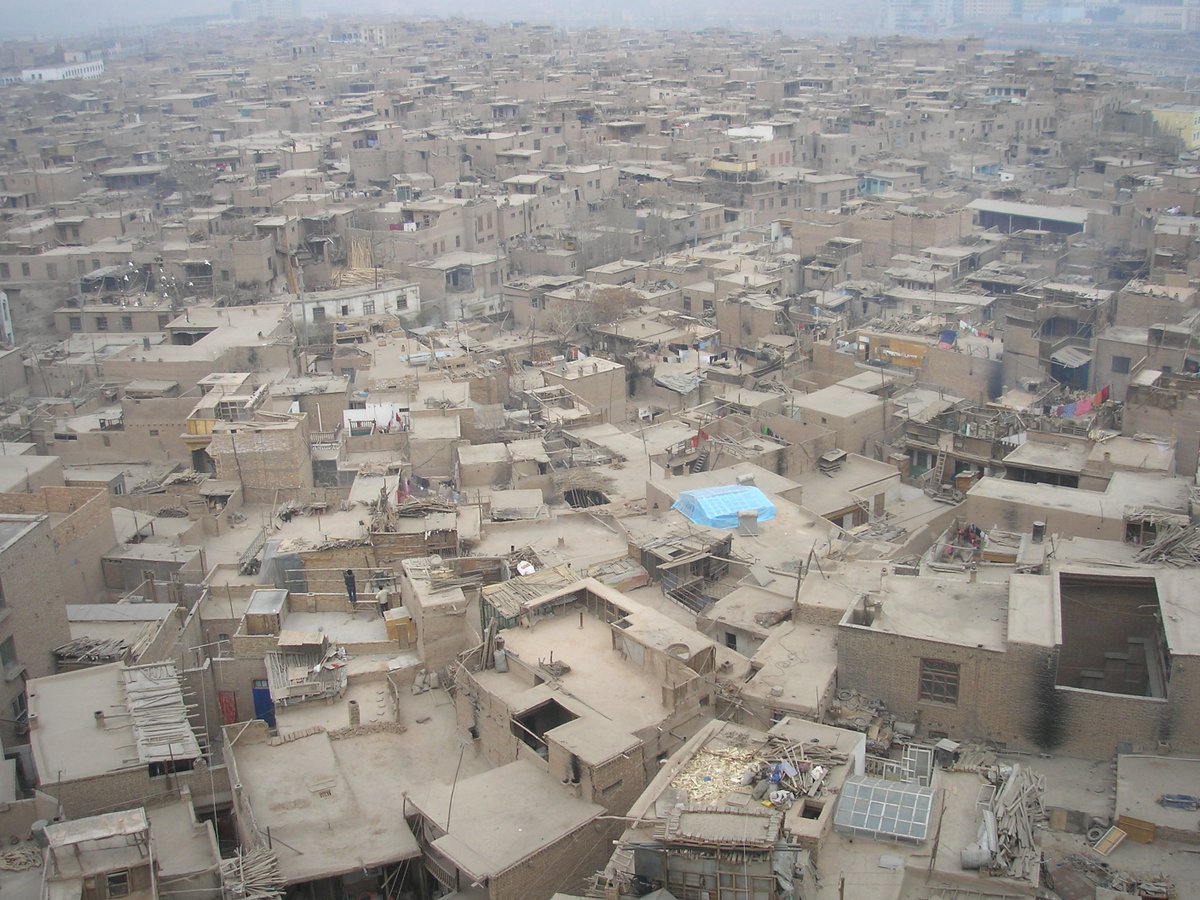
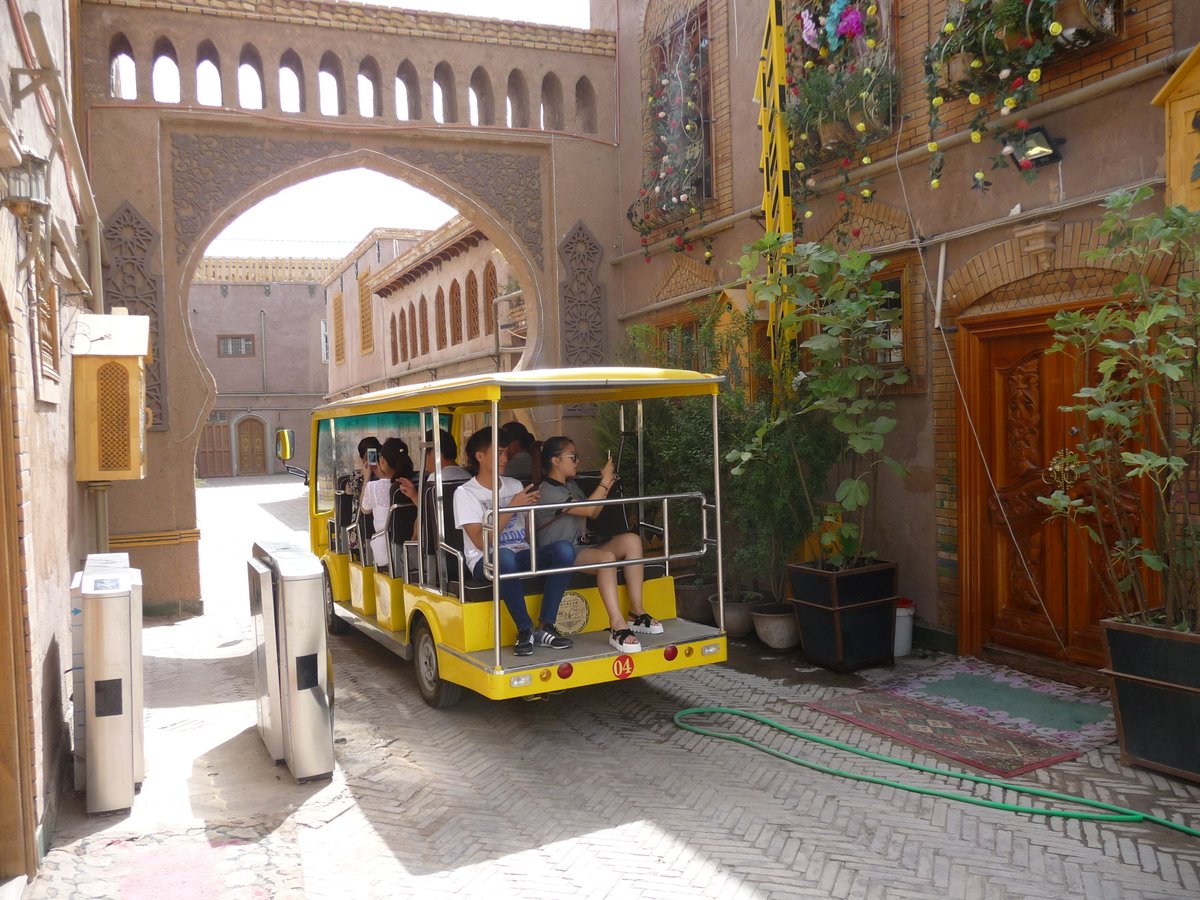
Of course there are graveyard demolitions, bans on Uyghur language education, forced boarding schools, and countless other efforts at cultural cleansing that are widely reported, but I'll end with pics to keep this thread focused on the rich Uyghur culture these policies target.
addendum: It's depressing to see so many Hindu nationalists quote-tweeting this thread to openly cheer on the destruction of other people's heritage simply because they are Muslim. A sign of the dangerous situation in India.
• • •
Missing some Tweet in this thread? You can try to
force a refresh
